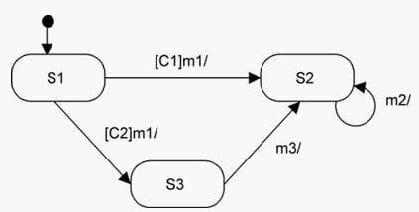OMG-OCUP-300 Online Practice Questions and Answers
What is a protocol state machine used to define?
A. the state machine that corresponds to an interaction specification
B. the valid operations for invoking the behavioral features of a classifier
C. an interaction between two state machines
D. the state machine of a protocol object
What is true about a parameterized package? (Choose two)
A. a package from which new packages can be defined by binding parameters
B. names of classes within a parameterized package can be parameters of the package
C. a package where all classes in the package are parameterized
D. a package that is instantiable, and where the actual parameters are provided when creating package instances
E. a package with parameters that are names of other imported packages and a binding tells which actual packages are imported
F. a package with different variants, where the parameters tell how the package may vary
In what way can a UML 2.0 device best be described? (Choose two)
A. an operating system data structure representing a physical hardware component
B. a wireless network router
C. possibly nested with other devices
D. a standalone hardware component, such as a disk drive or printer
E. a physical computational resource with processing capabilities
What kind of relationship is an information flow in UML 2.0?
A. dependency
B. transition
C. connector
D. association
An information flow may NOT occur between which elements?
A. packages
B. instance specifications
C. associations D. use cases
D. classes
How does OCL refer to the contextual instance of the OCL expression?
A. context
B. me
C. this
D. yourself
E. self
What standard UML stereotype best captures a component's ability to represent larger-scale features of a data processing installation?
A. <
B. <
C. <
D. <
E. <
What is an abstract type in OCL?
A. Collection
B. Integer
C. Set
D. Sequence
E. Bag
In the exhibit, what does the protocol state machine in the diagram specify?

A. Either condition C1 or condition C2 must be true before the associated classifier can be invoked.
B. Both condition C1 or condition C2 must be true before the associated classifier can be invoked.
C. Only behavioral features m1, m2, and m3 can be invoked on instances of the associated classifier.
D. A client of the associated classifier must always first invoke behavioral feature m1.
What is NOT true of a transition in a protocol state machine?
A. may have a postcondition
B. may have a precondition C. may have multiple associated operation
D. may have no associated operation